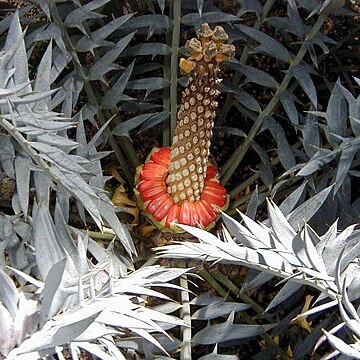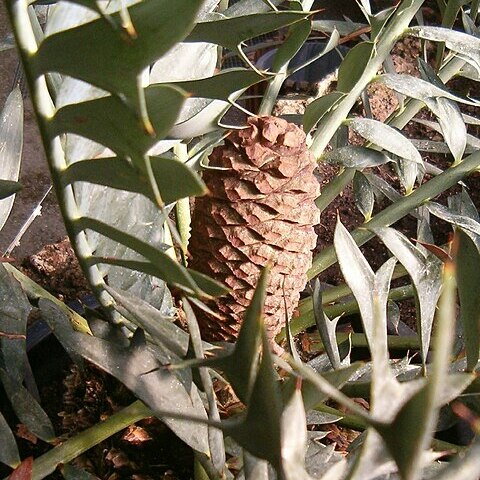Plant dioecious, palm-like. Stem aerial or decumbent, 0.5-2.0 m tall, unbranched or branched from base, covered by alternating series of woody bracts and persistent, swollen, truncated leaf bases. Leaves petiolate, pinnate with rachis recurved; median leaflets lobed, pungent-pointed, margins not markedly thickened; reduced in size towards base of rachis. Cones Feb.-Nov., appear sessile, reddish green. Male cones 1 or 2, oblanceoloid. Female cone 1, cylindric to ovoid, broader than male.
A tree with a stem mostly underground. It grows 30 cm to 1 m tall. The trunk is 20-30 cm across. The leaves are in a ring. They are up to 1 m long with a leaf stalk 13 cm long. The leaves have leaflets along the stalk. The leaflets near the base are shorter and others are 10 cm long by 2.5 cm wide. The cones occur singly on short stout stalks. Female cones are bluish-green and 40 cm long.
Dioecious stemless or short, single-stemmed tree to 1 m. Leaves pinnate, glaucous, leaflets distant below, ovate to lanceolate, lobed and sharply toothed, pungent. Female cones bluish green, to 40 cm.



